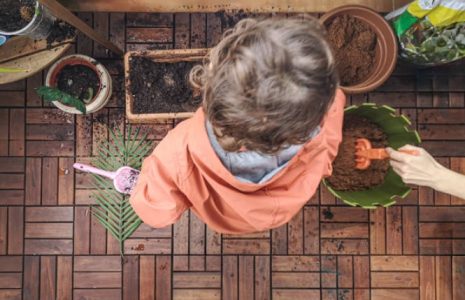No products in the cart.: $0.00
Coffee lovers and garden enthusiasts alike are buzzing about a unique sustainability trend: using Starbucks coffee grounds for your garden or compost pile. While it might sound unusual, this practice is gaining traction as an eco-friendly and cost-effective way to enhance plant growth. In this article, we’ll explore the benefits of utilizing these grounds, how to collect them, and how to integrate them into your gardening routine.
Why Use Coffee Grounds for Your Garden?
Starbucks coffee grounds or any coffee grounds are a nutrient-rich resource that can be beneficial for both your plants and compost pile. Here’s why you should consider incorporating them into your garden:
- Nutrient-Rich Content: Coffee grounds are rich in nitrogen, which is essential for plant growth. This makes them an excellent additive for composting or directly applying to the soil.
- Water Retention: The absorbent nature of coffee grounds helps retain moisture in the soil, reducing water loss and keeping your plants hydrated during dry spells.
- Repels Pests: Studies show that coffee grounds can repel pests like snails and slugs, making them a natural deterrent for garden pests.
- Composting Boost: Adding coffee grounds to your compost bin can accelerate the decomposition process and improve soil structure.
How to Collect Coffee Grounds
Collecting coffee grounds is easier than you might think:
- Ask at Your Local Starbucks: Most Starbucks locations are happy to provide unused coffee grounds, often keeping them near the entrance for customers. Simply ask baristas or staff if they have any available.
- Compostable Packaging: If you purchase a drink, don’t forget to take advantage of the packaging. Many coffee shops allow patrons to collect used grounds from discarded bags or cups.
- Recycle Responsibly: Use tools like the “Recycle a Cup” device (available online) to easily separate coffee grounds from filters and packaging for safe disposal.
Considerations Before Using Coffee Grounds
While coffee grounds are beneficial, there are a few things to keep in mind:
- Caffeine Content: While most of the caffeine is washed off during brewing, it’s still present in small amounts. High concentrations can harm sensitive plants, so use moderation.
- Soil Acidity: Coffee grounds can slightly increase soil acidity, which might affect certain plants like tomatoes and roses. Balance with alkaline materials or choose plants that thrive in acidic conditions.
- Source Matters: Always verify the source of your coffee grounds. Commercially sourced grounds may contain synthetic additives, so opt for organic varieties if possible.
- Composting Safety: Avoid adding too much at once to prevent anaerobic conditions in your compost pile, which can lead to smells and slow decomposition.
How to Use Coffee Grounds in Your Garden
- Direct Application: Sprinkle grounds thinly on the soil around plants or mix into mulch for a slow-release nutrient boost. Avoid applying too thickly to avoid repelling water.
- Compost Bin Integration: Add up to 20% coffee grounds to your compost pile. This accelerates decomposition and enriches your final product.
- Worm Composting: Use coffee grounds in vermicomposting systems. Worms love them, and the resulting castings are a valuable fertilizer.
- Repellent Use: Sprinkle grounds around crops to deter pests like slugs and snails.
Recycling Coffee Packaging
Beyond using grounds, don’t forget to recycle coffee packaging properly. Shred used filters, collect grounds for garden use, and dispose of packaging responsibly to reduce waste.
Conclusion
Using Starbucks coffee grounds for your garden or compost pile is a simple yet effective way to promote eco-friendly practices. Not only does it save money, but it also contributes to sustainable gardening. By collecting, using, and recycling these grounds wisely, you can enhance your garden’s health while minimizing environmental impact.
If you’re ready to take your gardening skills to the next level, explore more tips on composting and plant care on
From vermicomposting to mulching techniques, we’ve got everything you need to create a thriving garden.
Let us know your thoughts or share your experiences with coffee grounds in the comments below!
FAQs About Using Starbucks Coffee Grounds for Your Garden or Composting
What are Starbucks coffee grounds? Can they be used in the garden?
Starbucks coffee grounds are the spent grounds leftover after brewing coffee. Yes, they can be used in the garden as a nutrient-rich additive.
Are coffee grounds good for plants?
Coffee grounds are rich in nitrogen and can benefit plants by providing essential nutrients and improving soil health.
How much caffeine is left in coffee grounds after brewing?
Most of the caffeine is washed off during brewing, leaving minimal amounts. However, it’s still present and should be used moderately to avoid harming sensitive plants.
Does using coffee grounds make soil acidic?
Coffee grounds can slightly increase soil acidity. This might affect certain plants like tomatoes and roses, so consider balancing with alkaline materials or choosing acid-tolerant plants.
Can I use commercial coffee grounds safely in my garden?
Yes, but always verify the source. Commercial grounds may contain synthetic additives, so opt for organic varieties if possible.
How do I collect coffee grounds from Starbucks?
Simply ask baristas or staff at your local Starbucks. Many stores keep unused grounds near the entrance for customers to take.
Is it better to buy organic or regular coffee grounds for garden use?
Opt for organic if possible, as it avoids synthetic additives. Regular grounds can work too but ensure they are free from unwanted chemicals.
How much coffee grounds should I add to compost?
Add up to 20% of your compost pile. This amount ensures a boost without causing anaerobic conditions or excessive smell.
Do worms like coffee grounds for vermicomposting?
Yes, worms benefit from coffee grounds as they help in digestion and the creation of worm castings, a valuable fertilizer.
Can I use coffee grounds as a natural pest repellent?
Yes, they can repel pests like snails and slugs naturally. Sprinkle them around plants to keep unwanted visitors away.





